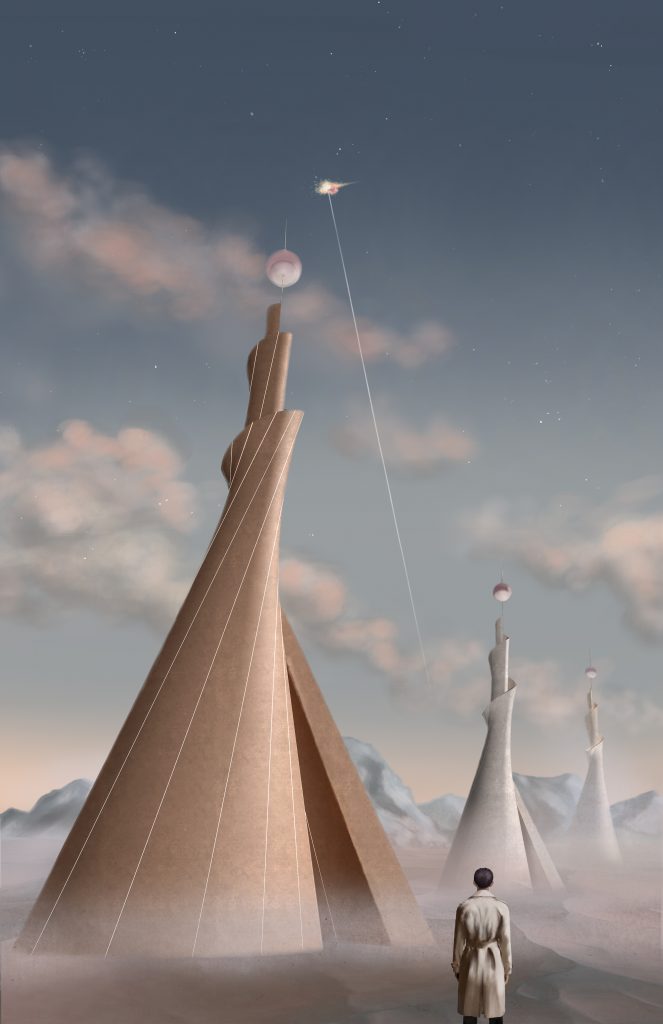
Memory Externalization
It was the Age of Memory. It all started two hundred years ago, well before I was born, when an extraterrestrial metal was accidentally discovered with a breathtaking ability. Metal K encodes and outsources memories from the human brain. It had been a forever conundrum for neuroscientists that subjective memories evaded specific mapping on the brain, and epistemology consisted of encoding information from perceptual cues to the brain, largely limited by individual cognitive capacities. But with Metal K, one can almost access infinite knowledge, remember experiences that they may not have, master skills transferred from others’ training, or speak numerous languages. Memory can be encoded irreversibly from experience to brain, and reversibly from brain to Metal K. Experience is no longer positively correlated with age, nor is age with wisdom.
That memory can be outsourced to an external substance became a milestone for human civilization, bolstering human brain potential to unprecedented heights. People stand on the shoulders of the great masters of each discipline with Vitruvian versatility. Science develops at a dazzling speed; technologies in harnessing the extraterrestrial Metal K was rapidly advancing, so was human’s ambition. As proto-historic Hegel aptly posited, memory is the entirety of culture; where to install the center of Metal K had undergone decades of debate since no country felt safe to place the memory core in the borders of another. Then the most powerful project in human history was initiated – a space station was launched by the name of ARK (Astro Recollection of K) that relocates all Metal K resources to outer space. A network of K-Signal Towers were erected globally as a relay station between people’s brain waves and the central storage on the ARK. People use the memory externalization remotely.
The ARK
Connected to Earth by a long-dormant space elevator, the ARK serves as a storage center of all units of Metal K. With almost infinite memory capacity, the storage center holds not only all knowledge and data, but all the subjective experiences of Earthlings since two hundred years ago – the most extensive, erudite, and elaborate specimen of human society. It has become the brain of the Earth.
The ARK is structured as a gyroscope: the storage center is surrounded by three rings that rotate and balance the structure. The outermost ring is the turning ring; the middle ring is the balancing ring; the inner ring is occupiable, where I stay and work. The space elevator serves as a commuting passage but its usage is limited to only a few – for people of the occupation of mine.
Memory is the mental picture of the world. Forgethood is cruel, so the ARK’s significance transcends materiality. The ARK mission responds to a call – to be the permanent storage of all memories generated in human history, which is to be the carrier of human civilization. But in my eyes, the ARK’s meaning is more than that. Running alongside Earth but as a detached parallel world, It represents an escapist ideal in response to the dread for death and the desire for immortality.
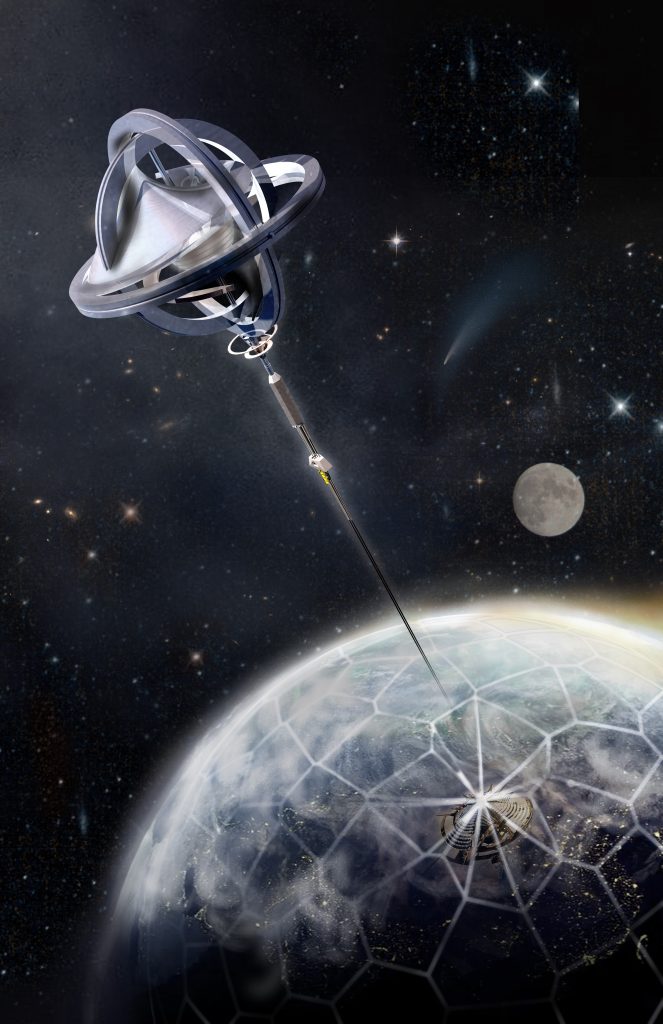
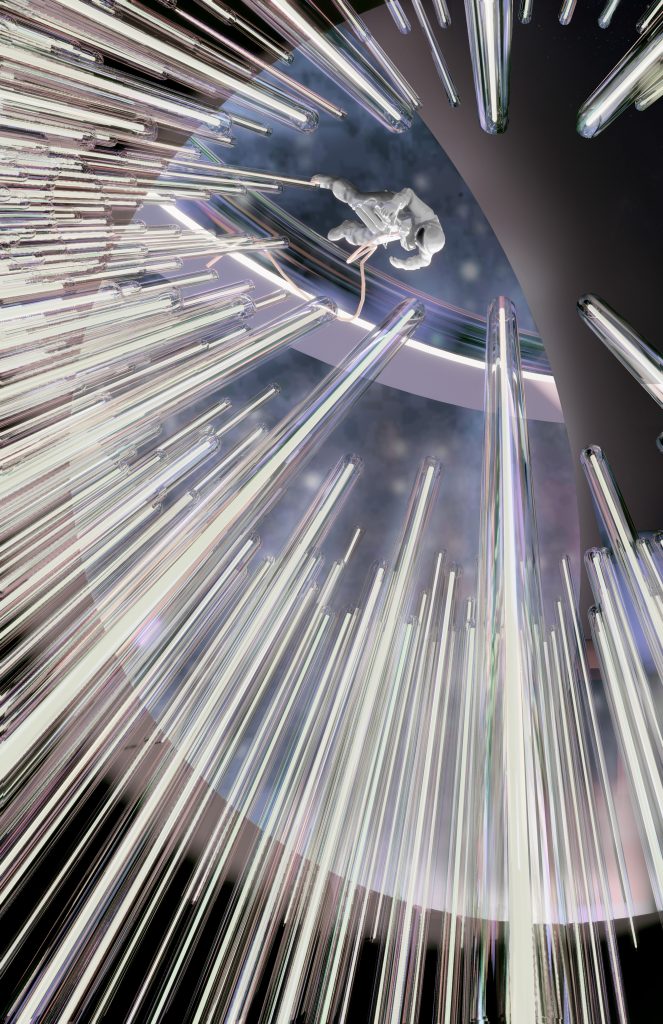
The Doorkeepers
Thirteen years ago, I inaugurated the position of a catalog keeper of the ARK. I still remember the day I embarked on this honorable mission, walking on the trail that many great predecessors left Earth from, showered in applause and respect from the crowd. Selected from the best mnemonic artists around the globe, the catalog keepers are three astronauts whose lifetime duty is to guard the metal K located at the center of the ARK. This core of the ark, the concentration of all human memories, its past, present and the future, is protected by two layers of ball structures made with Tungsten, the toughest metal in the world. There is an opening on each of the balls and only when the two opens align, one can enter the chamber of metal K. I always remember the first time that I entered the chamber and saw the 2500 crystal cuvettes that contain the precious metal K. The liquid metal glows in the dark because of the chemical reaction of memory storage, process and generation. I also remember the mixed feeling I have in that room, standing in front of the ultimate monument of human civilization, which is both magnificent and delicate.
Astray
Advanced technology didn’t make us an advanced society. I was in my thirteenth year on the ARK when the Nuclear World War broke out. Although my two colleagues and I on the Lower Earth Orbit were distant from the war on Earth, some nuclear explosions destroyed the base plant, shattered the rails on the space elevator, and the shock wave pushed the ARK off the orbit, away from Earth. That day, I didn’t even have time to react before the ARK got accidentally detached from the base, like a balloon cut loose. The shock was so strong that the ARK could never get back into orbit again. As the cabin became stabilized a little, I gazed at the screen and watched as our mother planet Earth glowed red. It was immediately clear to me that Earth was experiencing redshift, an optical effect indicating that the planet was quickly receding away.
Since the ARK was designed as a storage mission, it does not have any navigation or locomotion ability. All we could do was float in the direction the shock wave pushed us, in the initial speed the fusion energy transmitted to us. We were three stranded persons, guarding the safe containing memories of humans over generations. The ARK was like a “brain” detached from the “body,” going astray, facing the unknown.
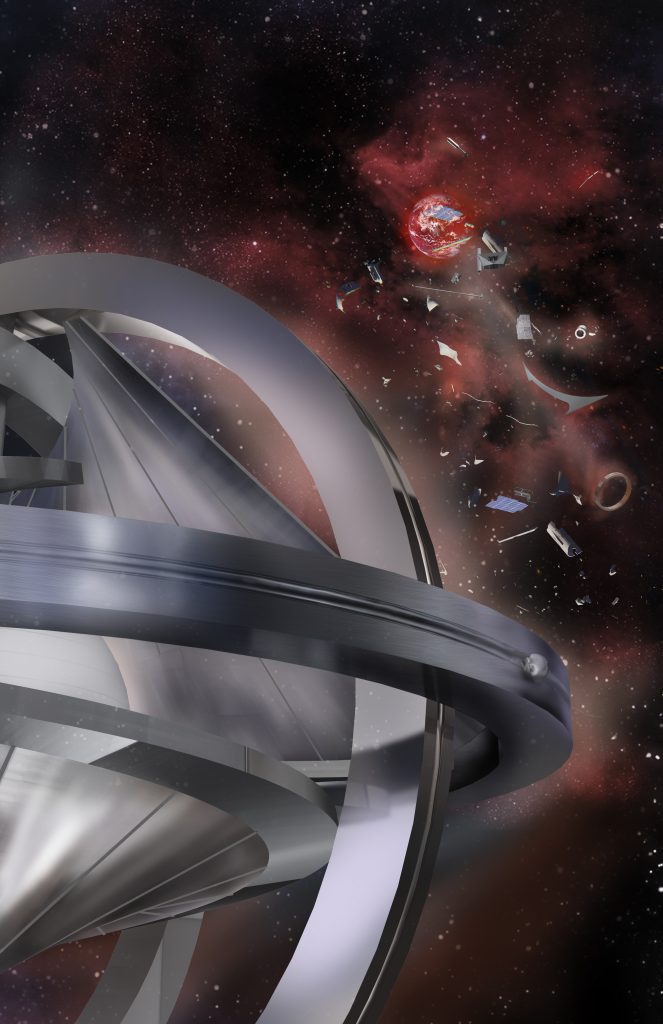
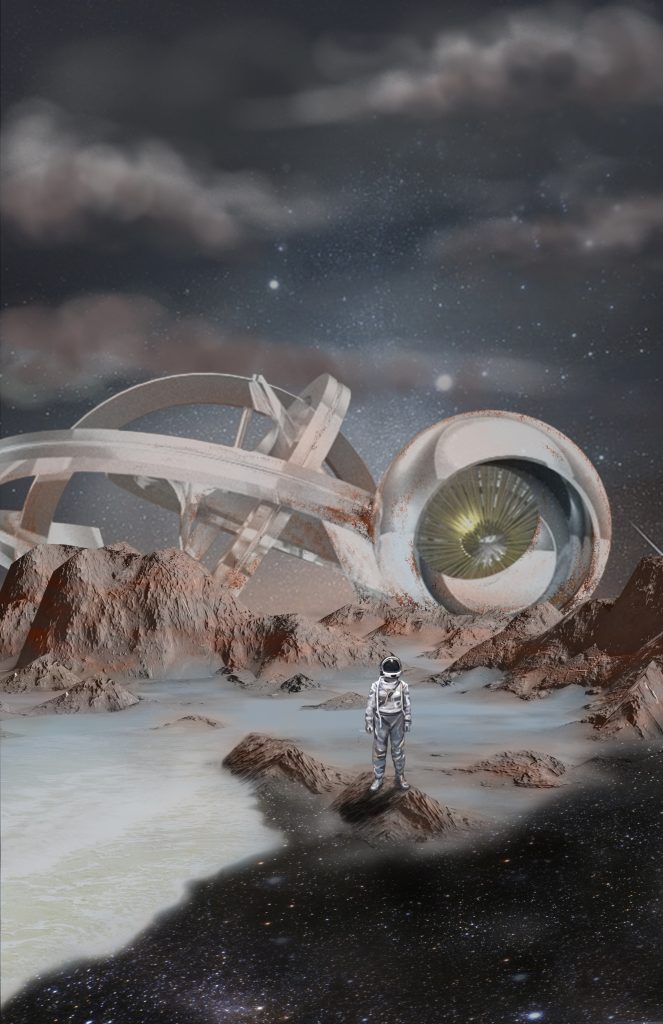
Existential Crisis
As I watched the redshifting Earth, my heart was oscillating between hope and despair. Since people relied entirely on externalized memory of K, without Metal K, people on Earth lost thousands of years of great effort. When will they remember us? Will they come find us? When they find us, will they celebrate our arrival as if it was the Pentecost? I am worried but at the same time fantasizing a heroic return. I am also oscillating between the heaviness of the responsibility, carrying on with the abundant treasure of the whole human civilization – each and all of its memories; and the lightness of destiny of me and human civilization now being on a small boat, floating in the boundless space. Will we start another human civilization? Sometimes I dream of arriving at a fertile and pleasant planet. But I would always wake up to find that we are still in the dark, infinite space. Or will I spend the rest of my life reminiscing in the memories of humans, like watching endless films documenting others’ lifes? If I were to spend the rest of my life in other people’s memories, is it like going through the endless possibilities of life, browsing options that I don’t have? What is the difference between reality and hallucination? Is the Storage Center my only last connection to human civilization? Or is it doomed to be a Book of Sand which will be too infinite to grasp, so intimidating that will devastate my soul?
This is an illustrated science fiction novel about a future when memory can be externalized, stored, and retrieved in terms of perception. The story is a prequel to the later game creation, Memory Miner (掘忆人).
Collaborators: Yujie Wang, Siyuan Xi
2020